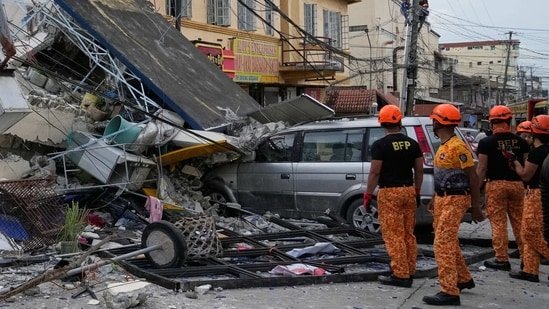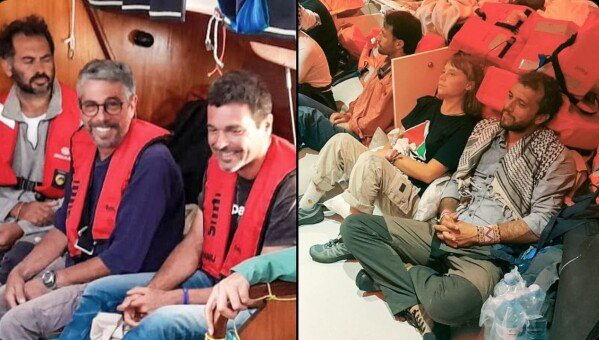EDITOR’S NOTE: Call to Earth is a CNN editorial series committed to reporting on the environmental challenges facing our planet, together with the solutions. Rolex’s Perpetual Planet Initiative has partnered with CNN to drive awareness and education around key sustainability issues and to inspire positive action.
Bikar Atoll and Jemo Islet are classic island paradises from above: white sand beaches, clear turquoise waters and lush forests. But over decades, even centuries, the remote uninhabited islands in the North Pacific — part of the Marshall Islands — have been overcome by rats.
When Paul Jacques, project manager of US-based nonprofit Island Conservation, visited in 2024, both islands were crawling with them. “They were running everywhere,” he tells CNN. “If you walked around at night with a torch, it was almost frightening — the forest floor was moving with rats.”
The rodents, which are invasive to the Marshall Islands and likely arrived as stowaways on ships, have caused ecological chaos. They devour native vegetation and prey on baby crabs, eggs and turtle hatchlings. The islands, which were once havens for the likes of endangered green sea turtles and seabird colonies, saw those populations decimated.
“When the Spanish (explorers) first saw Jemo they called it ‘Los Pájaros’ (The Birds) because there were so many birds there,” says Jacques. “When we went there last year, there weren’t many at all.”
A year later, it’s a different story, thanks to an eradication program undertaken by Island Conservation together with the Marshall Islands’ Marine Resources Authority and the Ministry of Natural Resources and Commerce.
Rat bait was dropped by drone in July 2024 — around 25 kilograms per hectare (55 pounds per 2.5 acres) — in lines across the islands, so that there were no gaps in coverage, explains Jacques. The bait, designed to target rats, has little effect on other species. It needed to be widespread so that each individual rodent ate at least one pellet, he adds.
The team made the long trip back to the islands this summer, to see if their work paid off.
“It’s like a big reveal,” says Jacques. “The moment you step on the island, your senses are super charged: you’re looking for rats, you’re looking for birds on the ground, you’re looking for any sign that tells you whether or not we’ve won or we’ve lost.”
Within an hour on Jemo and Bikar, he was confident that it had worked, and following intensive monitoring with trail cameras, rat traps, spotlight searches and thermal detection equipment, they confirmed that rodents had been successfully eradicated from the two islands.
Seabird populations were soaring: a breeding colony of 2,000 sooty terns had established themselves on Bikar, whereas the year before there had been none. Jacques saw greater crested terns and brown noddies nesting on the ground, a Christmas shearwater — a dark-brown seabird which he says has never been recorded on Bikar before — and species of geckos and land crabs that were absent in 2024. “(Species) that were undetectable before, because they were so suppressed by the rats, were re-appearing,” he says.
One of the most striking signs of success was the thousands of seedlings of the native Pisonia grandis trees that had sprung up across the forest floor. In 2024, they had counted zero. “To come back onto the island and immediately see a carpet of seedlings was a real early indication for me that something radical has changed here,” says Jacques.

Thousands of native Pisonia grandis tree seedlings have erupted from the forest floor since the rats were removed. – Paul Jacques/Island Conservation
The rebound of native flora and fauna helps to restore the entire ecosystem. Nutrients from the seabird guano (feces) boost soil fertility; crabs release their larvae into the water, which provides a food source to other marine animals.
Historically, Jemo Islet was an important resource to the community living on Likiep, an atoll about 40 kilometers (25 miles) away. They traveled to the island to fish, hunt for crabs and harvest crops such as coconuts and pandan leaves, used for weaving. In recent years, the resources declined dramatically, but due to the restoration project, island communities — some of whom have been involved in conservation efforts — hope to return to these traditions.
“Both Jemo and Bikar once held huge rookeries of seabirds and turtles. Now that rats have been removed, we look forward to the recovery of these colonies and the restoration of the vital natural processes that connect the deep ocean, the land and reef,” said Byrelson Jacklick, invasive species coordinator for the Marshall Islands Ministry of Natural Resources and Commerce, in a press release.
“The successful removal of rats from Jemo and Bikar brings joy among traditional leaders and the people of Likiep, Utrik (close to Bikar) and especially the Republic of the Marshall Islands government,” he added.
The goal now is to keep these islands rat-free, and due to their remoteness, Jacques is confident this can happen. He explains that Bikar is only visited nowadays by scientific expeditions that take careful biosecurity measures, and because of the community involvement and awareness of the rats’ dire impact, he expects the residents of Likiep to be equally cautious when visiting Jemo.
There are no plans to reintroduce new species or to modify the habitat: “These islands are places to be left alone to regenerate by themselves,” says Jacques.
The hope is that the successful eradication project will serve as a blueprint for islands in both the Marshall Islands and beyond. Feasibility studies are underway for Bokak Atoll, a semi-arid ecosystem similar to Bikar that is also located in a key marine protected area and infested by rats.
According to a 2023 report from the Intergovernmental Platform on Biodiversity and Ecosystem Services (IPBES), 90% of all global extinctions on islands are mainly attributed to invasive alien species. But it noted that eradication programs are cost-effective and have a high success rate of 88%.
If a problematic invasive species can be removed, it’s a gift that keeps on giving. “If you give it 10 years, if you give it 30 years, the change is cumulative. Populations increase, animals reappear that you thought were locally extinct because they’re in such low numbers that they weren’t detectable,” says Jacques.
“This is why I keep doing this job — to see those kinds of transformations.”
For more CNN news and newsletters create an account at CNN.com






